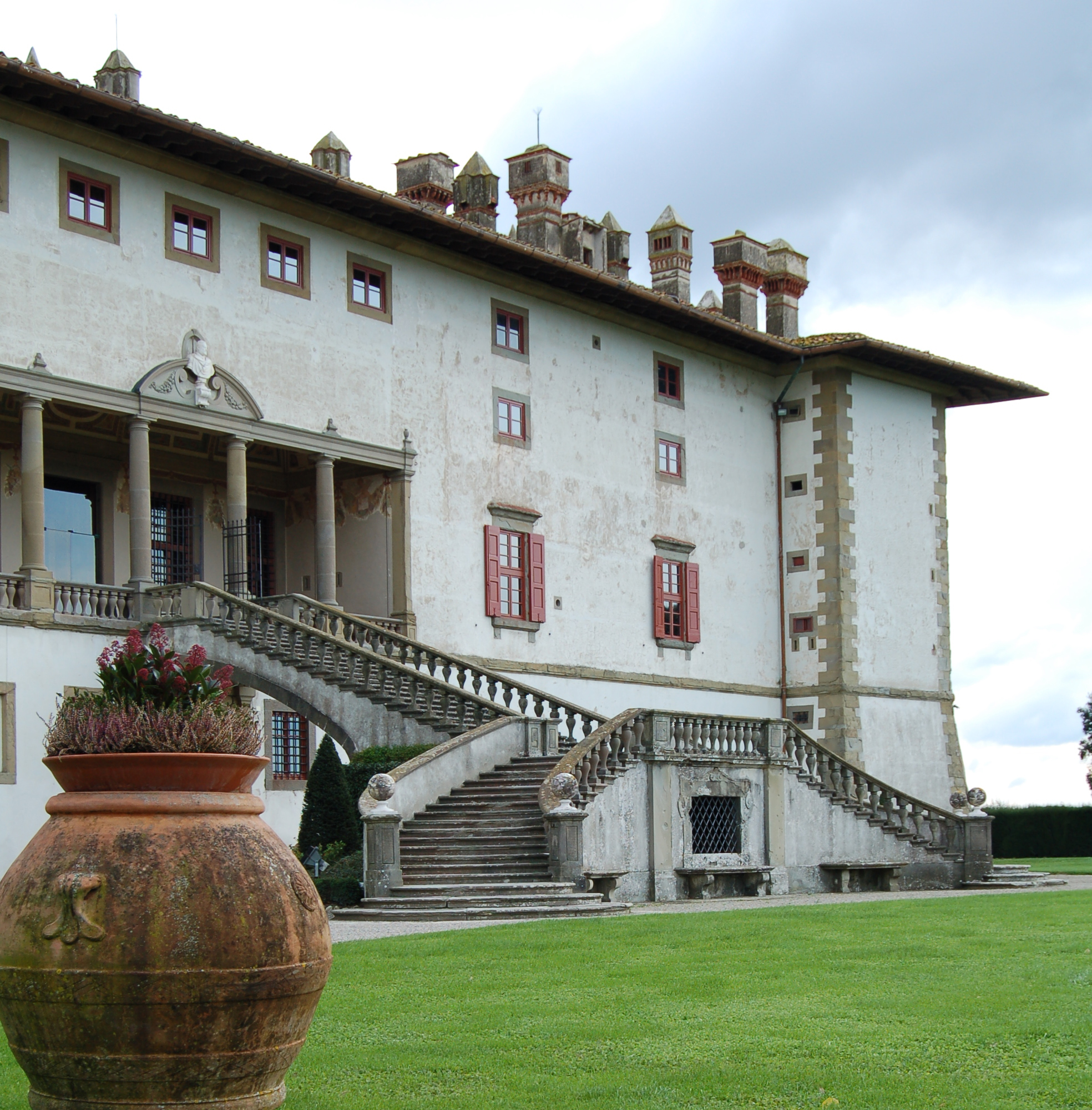The Medici Villa “La Ferdinanda” was commissioned by Ferdinand I (1549-1609) as a home to stay with their guests during the hunting, within the Barco Reale, the vast reservoir created by Cosimo I.
The project was entrusted to the court Bernardo Buontalenti (1536 – 1608) and the building was completed in just four years, from 1596 to 1600. After ups and downs, the villa, little frequented by Ferdinand I and his successors, and virtually abandoned by Lorraine, was sold in 1782 to the Marquis Bartolomei. Then it was inherited by the Passerini ceded in 1911 to Maraini, responsible for several restorations. In the late Fifties it was bought by Emilio Riva that stripped the interior furniture, selling at auction. Since 1970 the villa is owned by Artimino s.p.a. and hosts conferences, ceremonies and other events. From 1983 to 2011 the basement housed the Municipal Archaeological Museum, recently moved into the village.
The exterior – with four jutting corners and an extremely simple structure – a building reminiscent of the military-defensive character, a sort of castle-fortress. The plan is rectangular. The ground floor, with its large doors that open on the long sides (one on the existing main front and the other on the back), providing access to horses and carriages. There were also the armory and the cellars. A basement corridor carved in the rock led to a secret exit away from the villa. The external staircase – completed with two side ramps only in 1930 – is based on designs by Buontalenti and allows the slope to the main floor and balcony to be supported by four Tuscan columns (which in turn support a pediment in which is placed a bust Ferdinand I) and are decorated with frescoes depicting the “Allegories”, made in 1599 by Domenico Cresti, called Passignano (1559-1638), who also designed the interior decoration of some rooms.
The interior of the villa did not receive a decoration too, as per Ferdinando I will. Rather precious instead, the furniture. Among all, the ceilings are to be reported to the little chapel, decorated entirely by Passignano the show that contained paintings by Giusto Utens (1599-1601), located in the lunettes, reproducing the various Medici Villas, the apartment of Cristina di Lorena, consisting of three large rooms one of which leads to the “Stanzino del Poggiale”, a small bathroom completely painted.
The building is also known as “Villa of the hundred chimneys” due to the presence of numerous chimneys on the roof, each one different, as many interior rooms, which had to be heated during the winter hunts.
The villa also includes two structures detached from its main body, a building that now houses a restaurant, but was originally the home of the first Butler of Ferdinando I, Biagio Pignatta, and Paggeria, home of slavery, now used for hotel.





